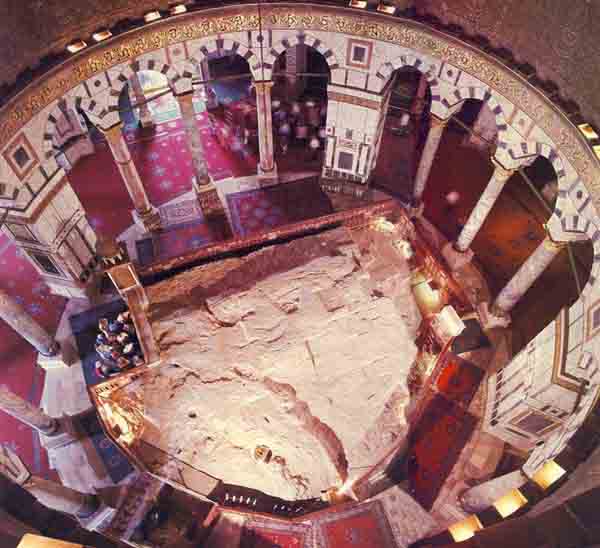Image Details

David Harris
The lunar-like surface of es-Sakhra—the Rock—bears the marks of 3,000 turbulent years. At bottom center, we can peer through a 3-foot-wide circular opening below which lies a cave known as Bir el-Arwah, the “Well of Souls.” The Crusaders called it the Holy of Holies and venerated it as the site of the annunciation of John the Baptist. Medieval Christians probably lit candles here as part of their pilgrimage to the site; the hole is simply a Crusader chimney. Moving west from the hole (towards the top of the photo), we see two flat rectangular areas, each about 3 feet wide and 5 and 8 feet long, respectively. Ritmeyer recognized these areas as foundation trenches, cut to create a level surface on which foundation stones of a building could be placed. On the western edge of the rock, the Crusaders built a broad staircase. The far western edge of the rock can be seen at top, nearly abutting the balustrade; this edge is a natural rock scarp. Along the north side of the rock sits a rectangular depression measuring 4 feet 4 inches by 2 feet 7 inches. Slightly further to the east we can still see signs of Crusader quarrying; in medieval times, pieces of the rock were literally worth their weight in gold. Finally, in the center of the rock is a trapezoidal area that lies at the center point of the Dome of the Rock. The building was laid out from here, using a string attached to a pole to draw the circular plan of the structure.
